.png?type=webp)
Web2 Vs Web3 - Web3 Oversimplified
24 August, 2022
22
22
1
Contributors
Introduction
Web3 is a fucking big deal at this point! 🔥 If you're reading this, then you've probably heard about Web3, and If you've been on Twitter long enough, then you're probably tired of hearing about it.
But why web3? And how does it compare to web2? What does this mean for the rest of us still caught in web2 limbo? And most importantly, why are kids getting mega-rich off this? Hmm. Let's find out.
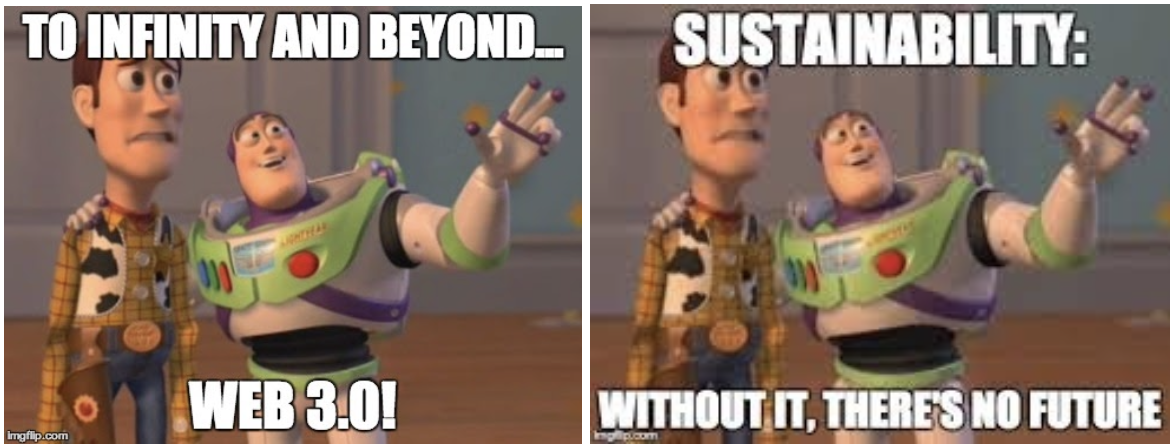
The Web
So, you've heard of web3 and are probably asking yourself, "What the heck is web3?" I wish I could give you a quick definition of web3, but it's not easy. web3 is the web's future, and we must look at the past and present to fully comprehend it.
Web1
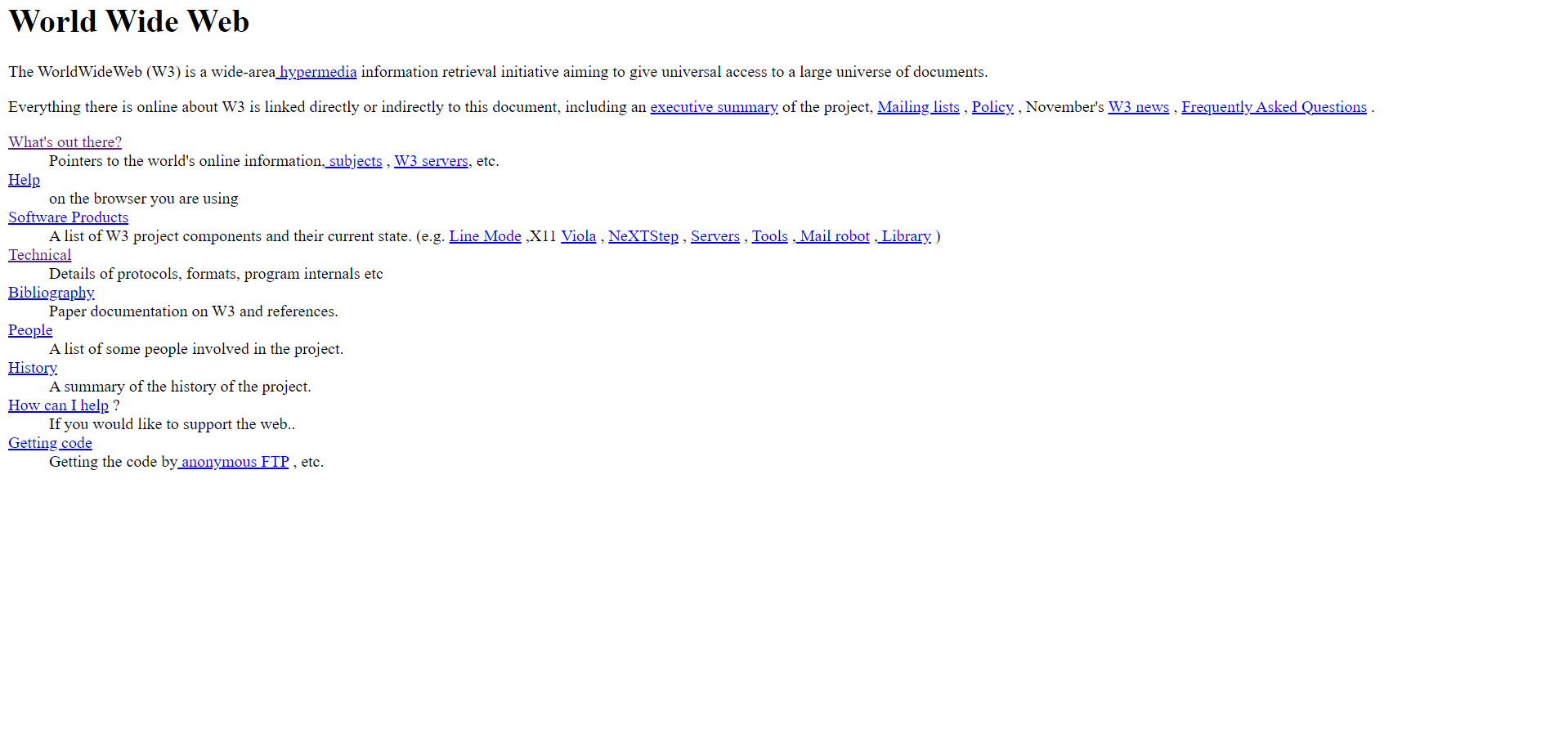
The year is 1989, and a British Computer Scientist named Tim Berners-Lee is at a CERN site currently concluding on his greatest invention yet. The product is finished, and the World Wide Web is born.
The World Wide Web, popular abbreviated as (WWW) and called the web, is a system that allows documents and other resources to be shared through Uniform Resource Locators or URLs.
This incredible invention kickstarted what we tech people now call Web1. Web1 is usually referred to as the read-only web. This is because, during the web's early days, no sophisticated backend and frontend tools were available as the ones we use today.
Early websites offered little to no interaction—the only person who could create new content on a particular website owner.
Web1 content creators were mostly developers because, at the time, the only people with the technical know-how to create a website were primarily developers.
Believe it or not, domain names weren't even a popular thing back then, and web hosts didn't even exist. This meant that developers had to host their websites on a physical computer that they only had access to or, in most cases, their personal computer.
These dynamics created by web1 were mostly decentralized. The lack of any form of centralization in web1 lead to numerous problems like:
- Frequent website downtimes due to developers' computers being turned off.
- Difficulty locating needed web resources.
- Bad user experience (Not like anyone cared, though :D)
As the famous saying goes, "Modern problems require modern solutions" and yes, those solutions were to come in the form of multi-billion dollar enterprises.

Humans are experts at solving problems. When a problem presented itself in the form of what Web1 was lacking, humans opted to either:
- Fix the problem and get rich off it.
- Live with the problems, and hopefully, things might become bearable.
Mon petit pois, humans chose the former option, and a few notable household names were born.
Web1 opened the world to a new dimension of digital possibilities in human history. The content creators of Web1 were the sole benefactors of this web model. They had the power to regulate their content and monetize their sites however they saw fit.
In summary, web1 was a mess! People got by memorizing IP links to frequent websites and hoping that site was still available.
A solution was on the way to put an end to the chaos. But, in reality, the answer was always there! On the other hand, humans would devise a more practical method of exploiting this solution.
Did you know? 💡 The first web page created by Tim Berners-Lee is still online and running to this very day. Check it out here
On the plus side, Web1 contributors profited monetarily from their created content. Creators had complete control over what they published on their websites. There were no internet laws back then as there are now; therefore creators were free to upload anything they wanted, including:
- Political views.
- Religious views.
- Activism.
- Hate & illegal content (which is why regulations were put in place)
Most websites at the time had methods of generating cash that didn't require them to go through a third party, making revenue generation easier and virtually untraceable.
It indeed was a free and open web!
Web2
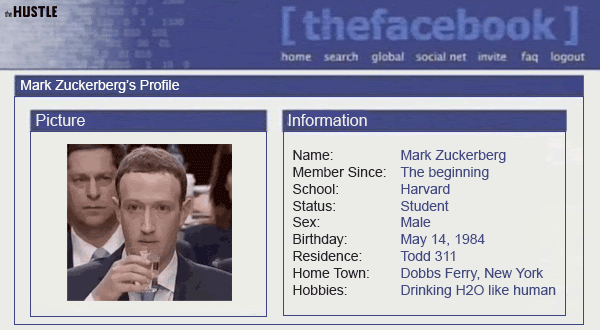
Web2 is the second iteration or version of the web. This version of the web started roughly in 2001 - 2005 when the rise of dynamic websites became a thing, and everyone wanted a piece of it.
This new slice of the cake was unusual and revolved around a very centralized and controlled model.
Unlike Web1, everything in Web2 is centralized, meaning all our data are concentrated at a single storage point and controlled by a single entity.
Web2 created a dynamic that enabled everyone to be content creators. This is why Web2 is often described as the Read-Write web. In this era, websites now had functionalities that enabled people to perform actions like:
- Writing content,
- Posting Videos.
- Posting Images and Gifs.
For example, if I post on Facebook, I've just created content; therefore, I'm a content creator. The same would apply if you reply to my post, like it, or share it; you've also created content. Hence that makes you also a content creator. This is what we mean when we say Web2 is Read-Write.
Web2 enabled small-time retailers and internet-based businesses to grow from being a startup based in a small and probably smelly garage to becoming multi-billion-dollar corporations based in Silicon Valley, the capital of tech country.
Some of these big-time Web2 businesses include:
- Meta. (formally Facebook)
- Amazon.
- Apple
- Netflix.
- Google.
If you're wondering why the list above seems to be ordered, then dear friend, you have won the lottery. Just kidding, you've won a whole pool of new info that I am about to bestow on you :)
These companies, when put together, are usually referred to as "MAANG" and are the biggest tech companies in the world. Formerly known as "FAANG" (until Facebook's apparent "fuck up") are also the most significant enablers of the Web2 model.
Don't get me wrong; these companies are not the only ones using this web model. Companies like Twitter, OnlyFans, and many existing companies benefit from Web2.

Some of these Web2 enablers can be in the form of Web hosts and Cloud Services, which in case you didn't know, is what Google and Amazon invest more of their resources into.
The emergence of centralized web hosting platforms and cloud services has almost eliminated one of Web1's key issues: frequent website outages. Web developers can now rely on these services to keep their websites up and running 24 hours a day, seven days a week, for a fee, of course :)
You could ask yourself, "Favor, how are they enabling this Web2 model?" If you thought about this, then great! If you didn't, then still great!; it's the whole point of this topic, so let me start by giving you a quick rundown.
Ohh, and BTW, have you heard about Twitter? :)
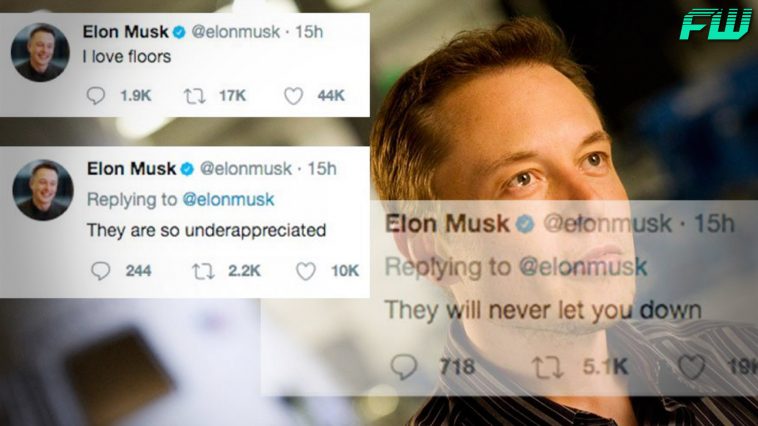
Let's say, for example, you've heard about this social media platform called Twitter. You may also have heard about how Elon Musk is always shitposting on the platform daily. You think, "Hey! I wanna shitpost too", but wait! You don't have a Twitter account, so you take your computer or phone, go to Twitter's website, and try creating an account. Here's what is going to happen:
- Twitter will require your biodata. (First name, Last name, Date of birth, etc.)
- Twitter will require your email address or phone number to ensure that it's you trying to register.
Sounds easy, right? This process is easy, and becoming a Twitter user is worth it. The same can be said about the other companies using the Web2 model.
Though centralized organizations are well-known for adequately handling your data and always adhering to data protection standards, most Web2-centric corporations frequently misuse or utilize your data. They do this to create additional profits for themselves.
However, one could wonder, "What are these companies doing with our data?" This is a valid question to pose to yourself.
Ways companies profit off our data include:
- Selling our data to third parties
- Targeted advertisements.
- Selling analytics based on our data.
You won't be shocked to find out that most Web2 companies make money primarily from Ads.
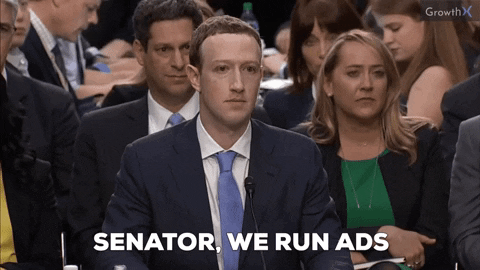
These runaway Web2 companies have been consolidating power at an alarming rate. This is because the amount of data they have gathered on us all is enough to:
- Influence our daily lives and decisions.
- Influence elections and governments.
- Dictate us what society should be like from their point of view.
- Create an alternate social-economic community that they only can control.
All this is possible because these Web2 companies know who we are and what we do, and they have the data to support it.
Because Web2 data is centralized, platforms like Twitter and Facebook can easily remove you from their platforms. If they deem your actions on the network violate their terms and conditions, they can temporarily or permanently bar you.
Even if your actions are legitimate, if the owners of the platforms to which you contribute don't like you, then you can kiss your account goodbye.
If you've been reading thus far, you've probably observed a transition from Web2 being an excellent thing to becoming a less powerful force for good things to emerge.
Although Web2 ushered in a massive technological change to the traditional web, it has since been exploited by the owners of these vast platforms to rack in more gains for themselves. The result leaves us with nothing but potential risks for our identities (We will discuss this in the subchapter titled "The Problem with Web2").
One of the primary drawbacks of centralized Web2 is that if one of these giant platforms gets hacked and our data is exposed, we will bear the costs.
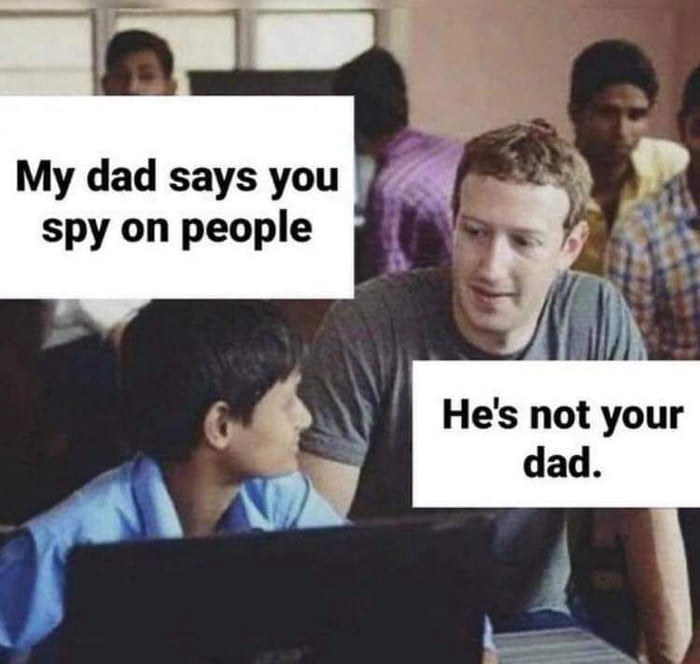
One annoying inequality on most Web2 platforms is how they generate most of their revenue from us and our data and how we make virtually nothing in return.
Monetization is a real problem in Web2. You give soo much but don't get back as much as you give. Creators are forced to find other means of making cash from the content they create. These other means can sometimes be daunting and is not a straight route to success.
Ever since most of the issues with Web2 have come to light, the very existence of this web model has been called into question, and more people are starting to see right through it. Things need to change once more! We need a better web! I think you know where this is headed :)
Fast forward more than two decades since the web's inception, and you'll notice that things have changed dramatically.
Some notable changes and improvements include:
- Web models now have leaned towards centralization.
- Web hosting and DNS were now a real thing.
- Search engines now existed.
- Frequent website outage was almost nonexistent.
- Monetization is now a significant issue.
Web3

Web3 is the third version of the web!
You might think you already know what Web3 is about after reading this far, but there's a lot more to it than you think.
Numerous sources describe web3 as an era of autonomous systems working together to build a more secure and accessible web.
The problem with these sources is that they overlook Web3's simplicity and how it works compared to Web2 and its similarity to Web1.
Everything on Web3, unlike Web2 and nearly identical to Web1, is decentralized, which means there is no single point of authority.
Web3's primary goal is to eliminate humans from decision-making, replace them with code, and build a closed, sustainable economy that uses cryptocurrencies to reward its members.
In contrast to Web2, Web3 was created to address some of Web2's significant shortcomings. These are some of them:
- Trust.
- Anonymity.
- Control.
Web3 participants can now remain anonymous while still participating effectively in Web3 apps.
This means you won't have to worry about stealing or selling your personal information to third parties.
In Web3, there are no central points of control. Everyone on the network essentially has the power to govern. The lack of centralization makes applications running on a Web3 model very difficult to take down.
In Web3, people no longer have to place their faith in humans but rather in transparent and open-source code that anyone can review to see if it contains any fraudulent code.
The code in question is used to create programs known as Smart Contracts. Smart Contracts are decentralized applications that run on a blockchain.
The introduction of Smart Contracts into the Web3 space has dubbed Web3 the Executable Web. This is because everything will be executed and verified in code.
Developers can use Smart Contracts to develop trustless systems that don't require human input to work and run independently. It is up to the blockchain's network to verify and govern the activities of a Smart Contract after it has been deployed.
So I've added a few more terms to the mix, such as Smart Contracts, Blockchain, and a Blockchain network, to help me connect the dots.
Blockchain
The primary driver enabling Web3 is Blockchain Technology.
Many of us are already tired of hearing about Blockchain :D, but understanding it is the key to grasping how Web3 works.
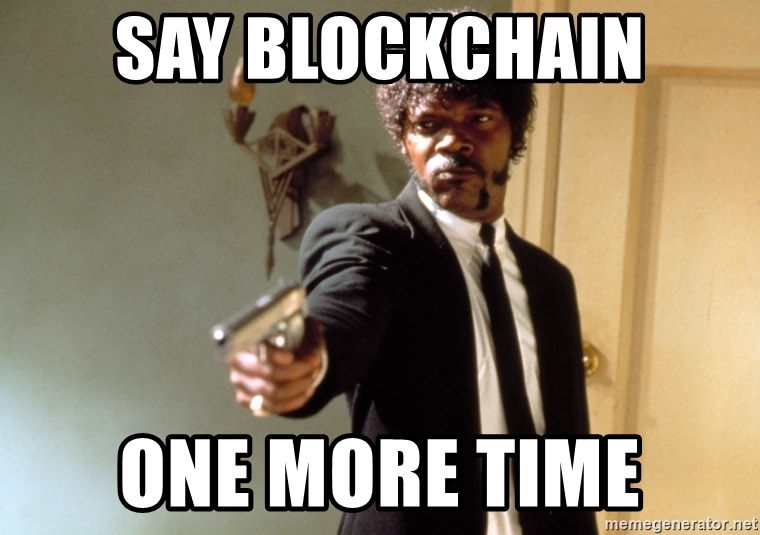
Originally invented by the infamous Satoshi Nakamoto in 2009 to support the Bitcoin network, blockchain technology has far evolved past the original designs of its creator.
A blockchain is a decentralized digital ledger that ensures data integrity using cryptography to link data stored in blocks.
Ethereum took blockchain tech a step further by introducing Smart Contracts, which changed the game and plunged the world deeper into the Web3 rabbit hole.
A decentralized protocol is a distributed peer-to-peer network that cannot be easily taken down. This protocol forms the backbone of Web3, making apps built on a Web3 impossible to take down. It is almost impossible to take down a well-functioning decentralized protocol.
The Bitcoin and Ethereum protocols are examples and can't be easily tampered with.
By running multiple instances of the blockchain called nodes, these protocols can efficiently confirm transactions and ward off attacks.
Because of the surviving nodes, the network will continue to function. The network's surviving nodes will share data and look for new nodes to join. This is the power of a decentralized network!
For example, even if you took out half of the Ethereum protocol's nodes, the network will continue to carry out its daily functions.
Suppose you're familiar with blockchain and the crypto cycle. In that case, you're probably aware that blockchain protocols have their currencies, known as cryptocurrencies.
People can use cryptocurrencies or coins for trades (i.e., buying and selling) and financial incentives for those who run the nodes that keep the network working. FYI, the people running these nodes are also known as miners.
Users of the network can send their coins to each other on the same blockchain network.
Miners confirm transactions and are compensated in the same cryptocurrency by the network.
To confirm a block of transactions, miners use complex mathematical calculations. The network gives miners a percentage of your transaction to keep them working. The transaction fee keeps the miners incentivized to keep the system working.
A practical scenario of all these Web3 techs in play would go like this:
- Bob wants to send 5 Bitcoins to Stella. The transaction fee is 0.5 Bitcoin.
- Bob starts the transaction, and 5.5 Bitcoins are transferred from his wallet.
- Stella receives 5 Bitcoins
- The miner who confirmed the transaction receives 0.5 Bitcoin.
This dynamic generates a symbiotic connection between users and miners on a blockchain network. Users want their transactions approved, and miners wish to pay transaction fees. This same relationship, in the end, is what keeps the system operating and profitable.
This system was designed to be tough to take down and not controlled by a single entity. It has exceeded expectations thus far.
This is what we should take away from it all:
- Web3 runs on a decentralized model.
- Governments and Individuals cannot easily take down web3 apps and protocols.
- People can now easily monetize their projects.
- Decentralization will become the new norm.
- Identity protection will be ensured as Web3 matures.
The Winner
So far, a lot has been said about web2 and web3. If you've been reading thus far, you can see the crystal clear difference between them and would also see that web3 is the better model.
Let's summarize the key reasons for this conclusion.
- Web3 is decentralized, meaning the system can't be easily taken down.
- Web3 enables anonymity, meaning your details won't be stored on any server.
- Monetization is easier; web3 platforms allow you to monetize your content and products easily.
- No external oversight; people can do whatever they want and be whosoever they want.
Is Web3 a replacement for Web2?
To put it simply, No! Web3 is not a replacement for Web2. It is unrealistic for all Web2 projects to completely switch from Web2 to Web3.
However, Web3 created an avenue for Web2 creators to build on top of Web3 concepts, which led to widespread adoption.
For example, just recently, Twitter rolled out its premium subscription service called Twitter Blue, which includes a feature that lets users connect to their OpenSea account and use their NFTs are a profile picture.
It doesn't just end there; other companies like:
- Meta
- Addidas
- Apple
- Microsoft
are also hopping into action, and the best is yet to come as more companies begin to embrace Web3 as a layer to scale on.
Ultimately, as we head into a decentralized future, a blend of Web2 and Web3, or as some call it, Web 2.5, will be the norm for a couple of years.
Conclusion
It's safe for one to say that Web3 is here to stay and will be here for years to come. One can also say that our future will entail a blend between a lesser web2 and a greater web3, working together to:
- Ensure that our identities are concealed and secured.
- Ensure that everyone has access to much-needed financial services.
- Ensure that creators are paid for their contributions.
- Ensure that companies can not consolidate much power over the rest of us.
A great way to sum everything up is:
"If Web2 was for the big companies and big tech, then Web3 is for the people"
Thanks for reading, and I hope you enjoyed this article! I hope you can see the main drivers of both Web2 and Web3 and where our decentralized future lies.
blockchain
web3
web2
